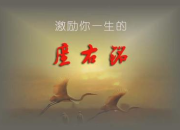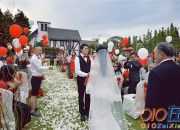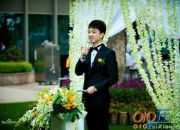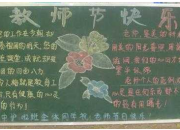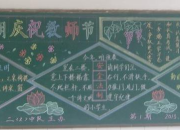英文简历写作的常见问题
时间:2021-08-31英文简历写作的常见问题
在英文简历中即便是设计的再好,如果没有充足的能力,就不能符合招聘的需要。
1. What is a resume anyway? 什么是简历?
Remember: a resume is a self-promotional document that presents you in the best possible light, for the purpose of getting invited to a job interview. It's not an official personnel document. It's not a job application. It's not a "career obituary"! And it's not a confessional.
2.What should the resume content be about? 应该在简历上写些什么?
It's not just about past jobs! It's about YOU, and how you performed and what you accomplished in those past jobs--especially those accomplishments that are most relevant to the work you want to do next. A good resume predicts how you might perform in that desired future job.
3.What's the fastest way to improve a resume? 完善简历的捷径是什么?
Remove everything that starts with "responsibilities included" and replace it with on-the-job accomplishments. (See Tip 11 for one way to write them.)
4.What is the most common resume mistake made by job hunters? 写简历时最常见的错误是什么?
Leaving out their Job Objective! If you don't show a sense of direction, employers won't be interested. Having a clearly stated goal doesn't have to confine you if it's stated well.
5.What's the first step in writing a resume? 写简历的第一步是什么?
Decide on a job target (or "job objective") that can be stated in about 5 or 6 words. Anything beyond that is probably "fluff" and indicates a lack of clarity and direction.
6.How do you decide whether to use a Chronological resume or a Functional one? 按时间顺序写简历好还是按技能或能力写简历?
The Chronological format is widely preferred by employers, and works well if you're staying in the same field (especially if you've been upwardly-mobile). Only use a Functional format if you're changing fields, and you're sure a skills-oriented format would show off your transferable skills to better advantage; and be sure to include a clear chronological work history!
7.What if you don't have any experience in the kind of work you want to do? 要是在你想要从事的领域没有任何经验怎么办?
Get some! Find a place that will let you do some volunteer work right away. You only need a brief, concentrated period of volunteer training (for example, 1 day a week for a month) to have at least SOME experience to put on your resume. Also, look at some of the volunteer work you've done in the past and see if any of THAT helps document some skills you'll need for your new job.
8.What do you do if you have gaps in your work experience? 要是发现在你社会经历中出现空白期怎么办?
You could start by looking at it differently. General Rule: Tell what you WERE doing, as gracefully as possible--rather than leave a gap. If you were doing anything valuable (even if unpaid) during those so-called "gaps" you could just insert THAT into the work-history section of your resume to fill the hole. Here are some examples:
1993-95 Full-time parent -- or
1992-94 Maternity leave and family management -- or
Travel and study -- or Full-time student -- or
Parenting plus community service
9.What if you have several different job objectives you‘re working on at the same time? Or you haven‘t narrowed it down yet to just one job target? 如果你同时有好几个职业目标怎么办?或者你一时之间无法做出选择怎么办?
Then write a different resume for each different job target. A targeted resume is MUCH, much stronger than a generic resume.
10.What if you have a fragmented, scrambled-up work history, with lots of short-term jobs? 如果你的'社会实践多而杂,且时间短怎么办?
To minimize the job-hopper image, combine several similar jobs into one "chunk," for example:
1993-1995 Secretary/Receptionist; Jones Bakery, Micro Corp., Carter Jewelers -- or
1993-95 Waiter/Busboy; McDougal's Restaurant, Burger King, Traders Coffee Shop.
Also you can just drop some of the less important, briefest jobs. But don't drop a job, even when it lasted a short time, if that was where you acquired important skills or experience.
11.What‘s the best way to impress an employer? 最能吸引雇主的办法是什么?
Fill your resume with "PAR" statements. PAR stands for Problem-Action-Results; in other words, first you state the problem that existed in your workplace, then you describe what you did about it, and finally you point out the beneficial results.
Here's an example: "Transformed a disorganized, inefficient warehouse into a smooth-running operation by totally redesigning the layout; this saved the company thousands of dollars in recovered stock."
Another example: "Improved an engineering company's obsolete filing system by developing a simple but sophisticated functional-coding system. This saved time and money by recovering valuable, previously lost, project records."
拓展阅读:英文简历写作注意问题
1. 身高体重、政治面貌、婚姻状况、出生年月、籍贯户口是不需要放在简历上的。除非雇主指明需要,照片也不用放。
2. 简历上不要写大段的“自我评价”。网上各个欧美大学都有简历模板,直接套用就好。表格式简历在欧美国家也比较少见。
3. 在中国获得的奖项和证书请写全称,并加上你的排名。
如果你光写“CET-6, Score: 600”,雇主不知道“CET”是什么东西。写“College English Test - Level 6, Score: 600”,雇主不知道 600 分算高算低,Level 6 是不是最高等级。比较好的办法是写上你的排名。同理,很多时候“Model Student”或者“XX Cup Chemistry Competition”面试官搞不清含金量高低,但如果你加上排名,就能充分表明“你很厉害”这点,面试官也不需要知道“Model Student”究竟是什么。
当然,如果奖项、证书和你应聘的岗位或申请的专业比较相关,又或者你的简历比较空,那可以花一句话解释一下该奖项、证书。
4. 为了避免歧义,日期建议写成 January 5, 2016 或者 5 January, 2016 这种格式。全是数字的话,16/01/05 外国人看不懂,01/05/16 在有些国家代表 1 月 5 日,有些国家代表 5 月 1 日。
5. 所有标点请用英文的半角格式。逗号后面记得空格。简历里一般用不到句号。
6. 还在上学或刚工作几年的,简历最好只有一页。
7. 文件名最好存为 Zhang_CV.pdf 或者 Zhang_Resume.docx 这样,以姓氏开头、无空格。
8. 邮箱的姓名请换成拼音姓名。如果收件方是外国人,汉字、非主流文字、姓名空缺很容易让你的邮件被忽略。
9. 包含简历的邮件里请至少写几句话,不要直接“你好,这是我的简历”,或者干脆什么都不写。
10. 姓名要统一。如果你用英文名,那么申请的每个环节都请用英文名(推荐信里、邮件签名处、面试中)。简历最上方的姓名为了和证件统一,可以写 Xiaoming "Sam" Zhang 或者 Xiaoming (Sam) Zhang。其他地方统一用 Sam Zhang。
英文简历的内容和中文简历一样,要用动词短语写你具体都做了什么、给公司或学生团体带来了什么实质贡献,尽可能列一些数据。所有的动词都用过去式,每行第一个词首字母大写。
【英文简历写作的常见问题】相关文章:
3.英文简历的写作
5.个人英文简历写作
6.英文简历写作入门
7.中式英文简历写作
8.英文简历写作要点


